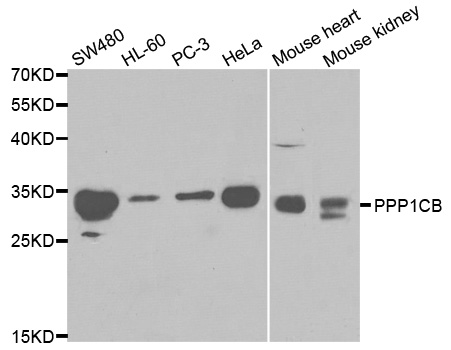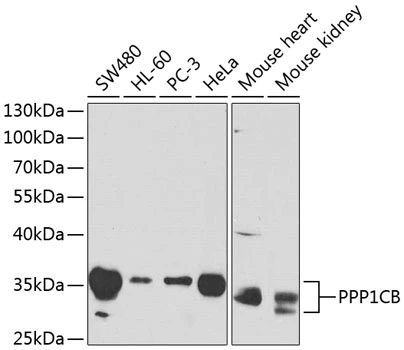PPP1CB antibody
GTX105295
ApplicationsImmunoFluorescence, Western Blot, ImmunoCytoChemistry, ImmunoHistoChemistry, ImmunoHistoChemistry Frozen, ImmunoHistoChemistry Paraffin
Product group Antibodies
TargetPPP1CB
Overview
- SupplierGeneTex
- Product NamePPP1CB antibody
- Delivery Days Customer9
- Application Supplier NoteWB: 1:500-1:3000. ICC/IF: 1:100-1:1000. IHC-P: 1:100-1:1000. IHC-Fr: 1:100-1:1000. *Optimal dilutions/concentrations should be determined by the researcher.Not tested in other applications.
- ApplicationsImmunoFluorescence, Western Blot, ImmunoCytoChemistry, ImmunoHistoChemistry, ImmunoHistoChemistry Frozen, ImmunoHistoChemistry Paraffin
- CertificationResearch Use Only
- ClonalityPolyclonal
- Concentration0.6 mg/ml
- ConjugateUnconjugated
- Gene ID5500
- Target namePPP1CB
- Target descriptionprotein phosphatase 1 catalytic subunit beta
- Target synonymsHEL-S-80p, MP, NSLH2, PP-1B, PP1B, PP1beta, PP1c, PPP1CD, PPP1beta, serine/threonine-protein phosphatase PP1-beta catalytic subunit, epididymis secretory sperm binding protein Li 80p, myosin phosphatase, protein phosphatase 1, catalytic subunit, beta isozyme, protein phosphatase 1-beta, protein phosphatase 1-delta
- HostRabbit
- IsotypeIgG
- Protein IDP62140
- Protein NameSerine/threonine-protein phosphatase PP1-beta catalytic subunit
- Scientific DescriptionThe protein encoded by this gene is one of the three catalytic subunits of protein phosphatase 1 (PP1). PP1 is a serine/threonine specific protein phosphatase known to be involved in the regulation of a variety of cellular processes, such as cell division, glycogen metabolism, muscle contractility, protein synthesis, and HIV-1 viral transcription. Mouse studies suggest that PP1 functions as a suppressor of learning and memory. Two alternatively spliced transcript variants encoding distinct isoforms have been observed. [provided by RefSeq]
- Storage Instruction-20°C or -80°C,2°C to 8°C
- UNSPSC12352203






